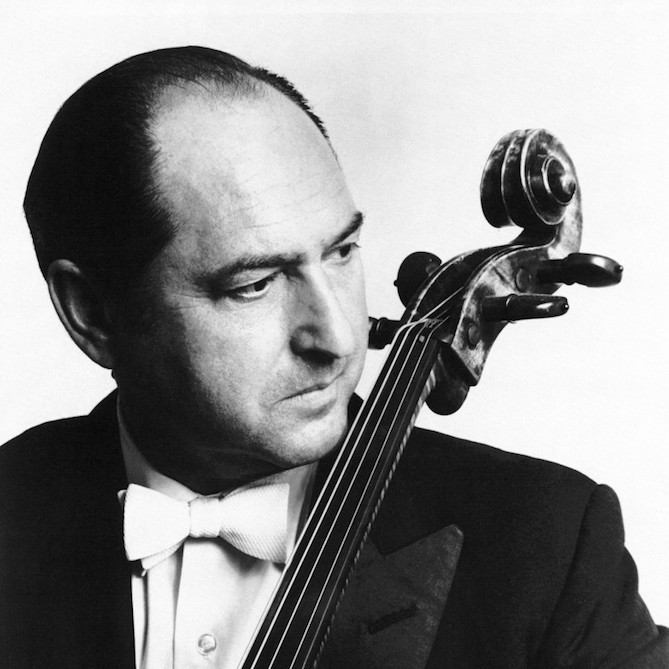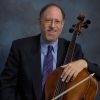
The Greenhouse Effect
Robert Jesselson
I feel like I have known Bernard Greenhouse for all of my life. Growing up in New York in the 1950’s and 1960’s, I heard him perform countless times with the Beaux Arts Trio and the Bach Aria Group. I can remember his warm sound and elegant appearance from my earliest days. It is probably because of hearing Mr. Greenhouse that I even wanted to play the cello. Then in 1971, when I was studying in Freiburg, Germany I got the first chance to actually meet him in person. It was backstage after an awe-inspiring performance of the Beethoven Triple by the Beaux Arts Trio.
I told him that I hoped to have the opportunity to study with him someday—and he generously responded by giving me his personal telephone number and address, saying to contact him when I was ready. I still have the address book with his name and address written in—it feels like a special talisman! It took another 18 years before I felt that I was really ready—after having studied with Paul Katz at Eastman, and after even having started to teach on the college level at Montana State University and the University of South Carolina. But I was fortunate that when the opportunity came, it was a high dose of the “Greenhouse effect.” He had just retired from the Trio, and was teaching at Rutgers full time. Since he was no longer touring with the Trio, he came to New Brunswick virtually every week, and we got massive doses of lessons and master classes. I still have tapes of all of my lessons and the master classes, and I regularly listen to them for continued inspiration. I also have all my notebooks, filled with comments that he made to me and to other students: “there should never be a straight line in music,” “the finger doesn’t make the vibrato, the arm does,” “don’t play in a monotone, like athletes sound in an interview on the radio,” and hundreds more gems of advice from his years of experience.
I worked on big literature with Mr. Greenhouse—the Shostakovich and Prokofiev concertos, the Stravinsky Suite Italienne, the Carter Sonata, among many other pieces for five different recitals. But one of the highlights for me was exploring the Bach 6th Suite with him. On the tapes I have him demonstrating various passages, showing articulation, strokes, and phrasing. And burned into my psyche is his way of playing the Allemande, which he showed me in several different lessons, until he was satisfied that I “got it.” His playing of the Allemande spoke so directly to me from his heart and soul, informed with a lifetime of thought and the influence of Casals. In one lesson, just before a recital, I remember playing the entire 6th Suite for him. After finishing playing, Mr. Greenhouse looked at me in his gentlemanly way, and said, “Very good. Now play the whole thing again.” And I proceeded to play the whole suite one more time. The point was that in order to play this long and difficult piece one time under pressure in a recital I had to be able to play it successfully several times in succession without getting tired. I still do this today in preparing for performances.
Also unforgettable for me was Mr. Greenhouse’s particular way of pronouncing the word “intonation,” which he seems to have used with me quite frequently—as in the phrase “you better fix your intonation!” What I can still hear is how he articulated every individual syllable, pronouncing it “in-to-na-tion.” The word seemed to be colored with a slightly European accent of unknown origin, conveying all the gravitas of its significance for a string player, and filled with complex subtleties of meaning. Whether he was referring to the expressive bending of pitch, or the harmonic movement of a chord, he emphasized that we must strive for the cleanest playing. Certainly his own playing reflected that level of commitment—even demonstrating in the lessons he was always “spot on,” and his accuracy in his own performances was legendary.
Many people have “heroes” and mentors whom they can look up to. Fewer have the opportunity to meet their mentors in person and even to be able to work with them. I have been fortunate to have lived my entire life with Mr. Greenhouse as a cello “hero,” to have been able to study with him, and to have been able to tell him this and to thank him.
Subjects: Artists
